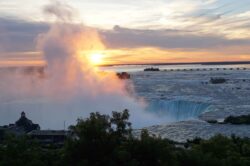Do You Want to Paint Like the Old Masters?

What was emulation?
The classical formation of artists and architects in the Renaissance and Baroque took the apprentice on a trajectory from imitation to emulation to invention. If imitation was the foundation of an artist’s training–copying a master’s drawings, drawing from casts, eventually drawing from the live model–emulation marked the stage where the apprentices began to establish their own mastery by rivaling their masters’ work. That’s what defines emulation: rivaling, by means of imitation. Those of us who love the Old Masters often revere them to the point of worship–“We’re not worthy!”–but they challenged themselves by challenging their own masters. If we want to recover that culture, plucking up the courage to emulate the Old Masters, not just imitate them, is how to do it.
 |
| Trois crayons drawing copy of Baciccio’s St. Joseph and the Christ Child, from the Norton Simon Museum, Pasadena, 2007. |
Historically, imitating someone else’s work was part of forming your own style, but it wasn’t a way to make your own work. The imitation of subject matter, though, was part and parcel of the humbler genres of documentary art–still lifes, landscapes, portraits. The pinnacle of artistic production was instead what they called history painting, and this involved imagining scenes from mythology, history, or the Bible; how one imagined was supposed to depend on the canon of previous imaginings. Artists who practiced history painting shaped their approach by emulating other artists, whether contemporaries or the ancients. That’s how I’ve trained myself over more than thirty years, by drawing in museums, churches, and the great houses of Europe.
The materials of emulation
So, how does one go about learning from the Old Masters in order to rival them? Choosing materials is an essential part. Another is by trying to reconcile what were once opposing camps. One of the big debates in Renaissance and Baroque culture was between partisans of drawing (or line), versus those of color; in the sixteenth century that was a battle between the Florentines and Venetians, while in the seventeenth and eighteenth centuries it was between the followers of Poussin and those of Rubens (Poussinistes vs. Rubenistses). But Rubens himself was no partisan, and one of the ways he tried to reconcile the camps was with trois crayons drawing. By using three chalks (red, black, and white) he could depict not just value but temperature, and hint at palette. Drawing from painting using trois crayons lets you apprehend not only form, but the essentials of color as well. You can also invent a painting in the early stages in ways that simultaneously resolve composition, subject, and atmosphere.
Historians who discuss trois crayons often treat the red (sanguine) chalk as an embellishment of a black line drawing, but my experience tells me that sanguine should in fact be the first phase, since it’s more forgiving in laying out preliminary outlines. I treat trois crayons as a sanguine drawing with black and white accents. Of course, white implies working on a medium-toned paper, and the value and hue of the paper is a big part of the eventual palette of the final drawing. Warm-hued paper establishes warm middle tones, whereas cool-blue or grey-paper highlights the red as the sole warm tone. The latter, it seems to me, was the primary choice of the Venetian camp, although Rubens himself often worked on warm-toned paper.
 |
| Trois crayons detail drawing copy of Lorenzo the Magnificent Receiving the Muses in Florence, from the Palazzo Pitti (Museo degli Argenti), Florence, 2012. |
Working while traveling means keeping a sketchbook or portfolio with multiple sheets, and the portfolio is best suited to carrying a variety of papers. Since fixing chalk is usually not convenient while on the road, I prefer drawing with an oil based crayon or pencil, which smears less. I also need several pencils, since I go through at least two or three sanguine points in each drawing, and sharpening in most public institutions is also inconvenient (it helps if you have a sharpener that collects the shavings).
Drawing after the Old Masters shapes not only your skills, but also your taste. It impresses on you their idea of the beautiful, which can’t really be apprehended any other way. And knowing how they operated, how they saw themselves with respect to their rivals, alerts you to how you might begin to rival them.
–David
David Mayernik is an artist, architect, professor, and author of The Challenge of Emulation in Art and Architecture (published by Ashgate, 2013).
 Artists Network Membership - 1 Year
Artists Network Membership - 1 Year  Breakthrough Paint Along: Where Mixed Media Combine Together
Breakthrough Paint Along: Where Mixed Media Combine Together  Paint Along 127: Paint the Motion of the Sea
Paint Along 127: Paint the Motion of the Sea  Paint Along 126: Simplify Your Landscapes with a Limited Palette
Paint Along 126: Simplify Your Landscapes with a Limited Palette  Breakthrough Paint Along: The Big Value of Miniature Landscapes
Breakthrough Paint Along: The Big Value of Miniature Landscapes  Portrait Painting: Rembrandt's Techniques Video Download
Portrait Painting: Rembrandt's Techniques Video Download  Figure Drawing Tips with Brent Eviston Video Download
Figure Drawing Tips with Brent Eviston Video Download  Southwest Art August/September 2025 Digital Edition
Southwest Art August/September 2025 Digital Edition  Artists Magazine July/August 2025 Digital Edition
Artists Magazine July/August 2025 Digital Edition  Pastel Journal Summer 2025 Digital Edition
Pastel Journal Summer 2025 Digital Edition  Artists Magazine March/April 2025 Digital Edition
Artists Magazine March/April 2025 Digital Edition  Artists Magazine January/February 2025 Digital Edition
Artists Magazine January/February 2025 Digital Edition  Best of Watercolor: Winners of the Splash 26 Competition Print Edition
Best of Watercolor: Winners of the Splash 26 Competition Print Edition  Southwest Art June/July 2025 Print Edition
Southwest Art June/July 2025 Print Edition  Artists Magazine May/June 2025 Print Edition
Artists Magazine May/June 2025 Print Edition  Southwest Art 2021 Digital Collection × 1
Southwest Art 2021 Digital Collection × 1  Watercolor Artist 2020 Digital Collection × 1
Watercolor Artist 2020 Digital Collection × 1  Watercolor Artist 2019 Annual Digital Collection × 1
Watercolor Artist 2019 Annual Digital Collection × 1  Watercolor Mega Magazine Collection × 1
Watercolor Mega Magazine Collection × 1  Pastel for Beginners Workshop
Pastel for Beginners Workshop  Composition & Design for Landscape Painting Video Workbook
Composition & Design for Landscape Painting Video Workbook  Drawing Mastery: Shading Course
Drawing Mastery: Shading Course  Alla Prima Bootcamp: 4 Weeks to Confident Painting Course
Alla Prima Bootcamp: 4 Weeks to Confident Painting Course  Eight Greats: The Pastel Journal's 10th Anniversary Artist Interview Series Digital Download
Eight Greats: The Pastel Journal's 10th Anniversary Artist Interview Series Digital Download  Secrets of Hyperrealist Watercolor Course
Secrets of Hyperrealist Watercolor Course  Acrylic Artist Summer 2017 Digital Edition
Acrylic Artist Summer 2017 Digital Edition  Exploring Acrylic: Abstract Art in Action Video Download
Exploring Acrylic: Abstract Art in Action Video Download  WetCanvas Live! Paint Stunning Landscapes from Photos: Lesson 23 & 24 Video Download
WetCanvas Live! Paint Stunning Landscapes from Photos: Lesson 23 & 24 Video Download  WetCanvas Live! Paint Stunning Landscapes from Photos: Lesson 9 & 10 Video Download
WetCanvas Live! Paint Stunning Landscapes from Photos: Lesson 9 & 10 Video Download  The Whimsical Face with Jane Davenport Video Download
The Whimsical Face with Jane Davenport Video Download 




Here are more oil paintings for your reference :
http://www.royal-painting.com
Here are more oil paintings for your reference :
http://www.royal-painting.com